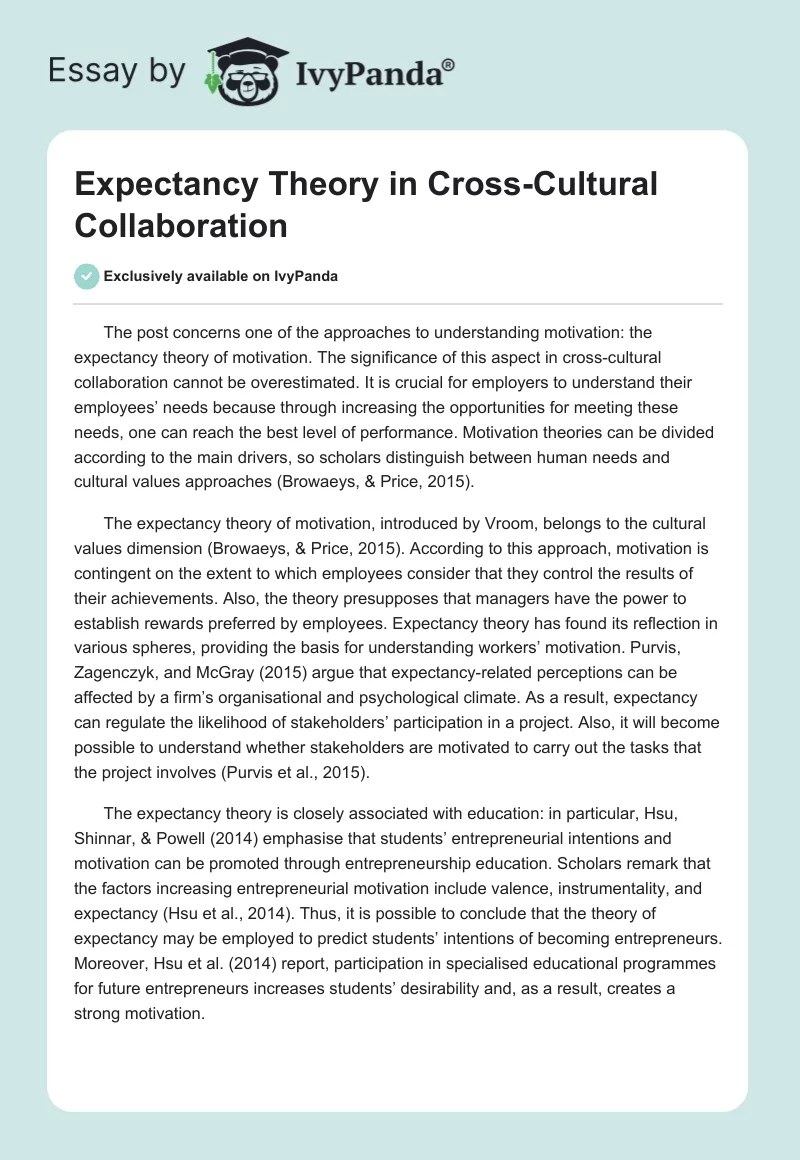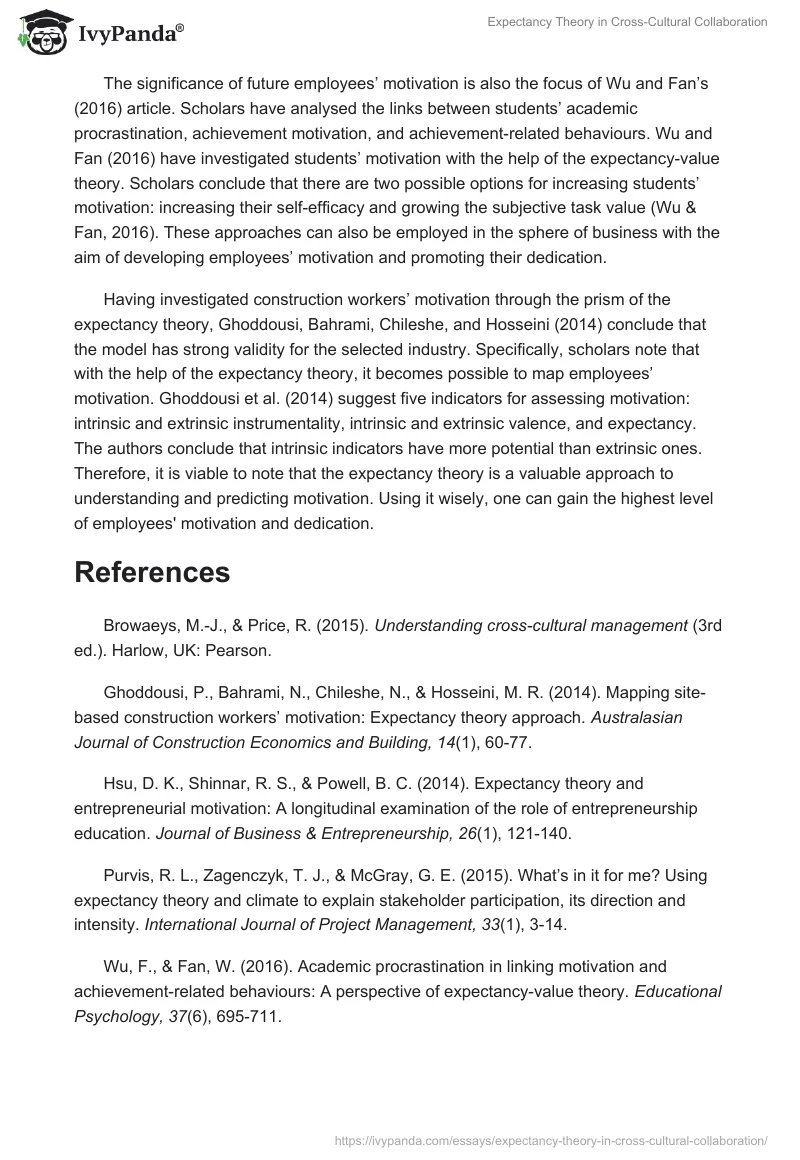The post concerns one of the approaches to understanding motivation: the expectancy theory of motivation. The significance of this aspect in cross-cultural collaboration cannot be overestimated. It is crucial for employers to understand their employees’ needs because through increasing the opportunities for meeting these needs, one can reach the best level of performance. Motivation theories can be divided according to the main drivers, so scholars distinguish between human needs and cultural values approaches (Browaeys, & Price, 2015).
The expectancy theory of motivation, introduced by Vroom, belongs to the cultural values dimension (Browaeys, & Price, 2015). According to this approach, motivation is contingent on the extent to which employees consider that they control the results of their achievements. Also, the theory presupposes that managers have the power to establish rewards preferred by employees. Expectancy theory has found its reflection in various spheres, providing the basis for understanding workers’ motivation. Purvis, Zagenczyk, and McGray (2015) argue that expectancy-related perceptions can be affected by a firm’s organisational and psychological climate. As a result, expectancy can regulate the likelihood of stakeholders’ participation in a project. Also, it will become possible to understand whether stakeholders are motivated to carry out the tasks that the project involves (Purvis et al., 2015).
The expectancy theory is closely associated with education: in particular, Hsu, Shinnar, & Powell (2014) emphasise that students’ entrepreneurial intentions and motivation can be promoted through entrepreneurship education. Scholars remark that the factors increasing entrepreneurial motivation include valence, instrumentality, and expectancy (Hsu et al., 2014). Thus, it is possible to conclude that the theory of expectancy may be employed to predict students’ intentions of becoming entrepreneurs. Moreover, Hsu et al. (2014) report, participation in specialised educational programmes for future entrepreneurs increases students’ desirability and, as a result, creates a strong motivation.
The significance of future employees’ motivation is also the focus of Wu and Fan’s (2016) article. Scholars have analysed the links between students’ academic procrastination, achievement motivation, and achievement-related behaviours. Wu and Fan (2016) have investigated students’ motivation with the help of the expectancy-value theory. Scholars conclude that there are two possible options for increasing students’ motivation: increasing their self-efficacy and growing the subjective task value (Wu & Fan, 2016). These approaches can also be employed in the sphere of business with the aim of developing employees’ motivation and promoting their dedication.
Having investigated construction workers’ motivation through the prism of the expectancy theory, Ghoddousi, Bahrami, Chileshe, and Hosseini (2014) conclude that the model has strong validity for the selected industry. Specifically, scholars note that with the help of the expectancy theory, it becomes possible to map employees’ motivation. Ghoddousi et al. (2014) suggest five indicators for assessing motivation: intrinsic and extrinsic instrumentality, intrinsic and extrinsic valence, and expectancy. The authors conclude that intrinsic indicators have more potential than extrinsic ones. Therefore, it is viable to note that the expectancy theory is a valuable approach to understanding and predicting motivation. Using it wisely, one can gain the highest level of employees’ motivation and dedication.
References
Browaeys, M.-J., & Price, R. (2015). Understanding cross-cultural management (3rd ed.). Harlow, UK: Pearson.
Ghoddousi, P., Bahrami, N., Chileshe, N., & Hosseini, M. R. (2014). Mapping site-based construction workers’ motivation: Expectancy theory approach. Australasian Journal of Construction Economics and Building, 14(1), 60-77.
Hsu, D. K., Shinnar, R. S., & Powell, B. C. (2014). Expectancy theory and entrepreneurial motivation: A longitudinal examination of the role of entrepreneurship education. Journal of Business & Entrepreneurship, 26(1), 121-140.
Purvis, R. L., Zagenczyk, T. J., & McGray, G. E. (2015). What’s in it for me? Using expectancy theory and climate to explain stakeholder participation, its direction and intensity. International Journal of Project Management, 33(1), 3-14.
Wu, F., & Fan, W. (2016). Academic procrastination in linking motivation and achievement-related behaviours: A perspective of expectancy-value theory. Educational Psychology, 37(6), 695-711.


